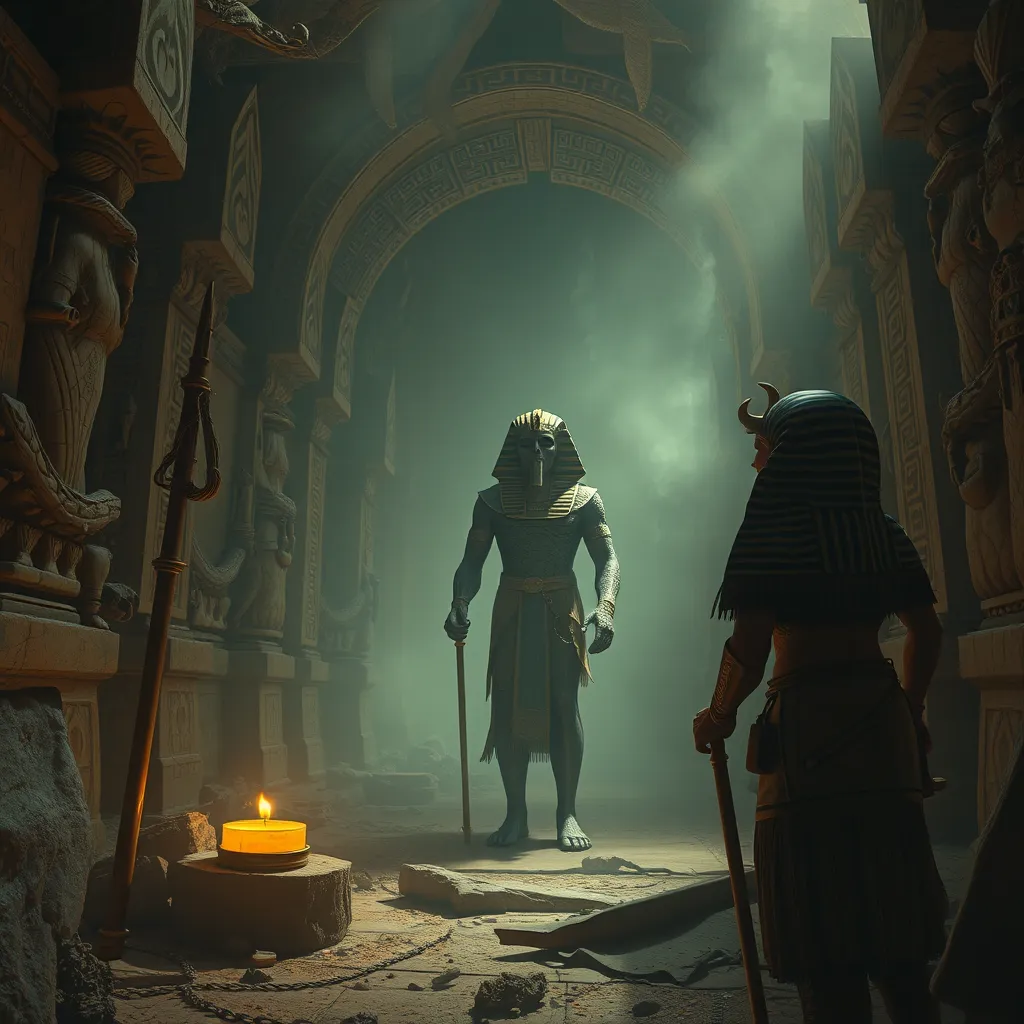The Curse of the Mummy: The Legend of the Dead Returning to Life
I. Introduction
The legend of the mummy’s curse is a captivating tale that has intrigued people for centuries. It speaks of ancient curses, the wrath of the dead, and the ominous consequences of disturbing the resting places of long-dead pharaohs and nobles. This article seeks to explore the origins, stories, and cultural impact of this fascinating legend.
Historically, mummification was a crucial practice in ancient Egypt, rooted in their beliefs about the afterlife and the preservation of the body. The process was not merely a method of embalming; it was a sacred ritual intended to ensure immortality for the deceased. Understanding this context is vital for grasping the significance of the curse that emerged surrounding these sacred practices.
In this article, we will delve into the origins of mummification, the emergence of the curse legend, famous cases associated with it, scientific explanations, its representation in popular culture, and modern perspectives on these ancient beliefs.
II. The Origins of Mummification
Mummification in ancient Egypt was deeply intertwined with their beliefs about the afterlife. The ancient Egyptians viewed life as a journey that extended beyond death, where the soul (or ka) would need a preserved body to inhabit in the afterlife. This belief laid the groundwork for the elaborate mummification practices that developed over time.
The mummification process was intricate and significant. It typically involved several steps:
- Removal of internal organs, which were then preserved separately.
- Desiccation of the body using natron, a naturally occurring salt.
- Wrapping the body in linen, often adorned with amulets for protection.
- Placement of the mummy in a sarcophagus, often within a grand tomb.
Notable pharaohs and figures associated with mummification include:
- King Tutankhamun, whose well-preserved tomb was discovered in 1922.
- Ramses II, known for his extensive building projects and burial practices.
- Hatshepsut, one of the few female pharaohs, who also underwent mummification.
III. The Emergence of the Curse Legend
The legend of the mummy’s curse began to take shape in the early 20th century, fueled by a growing fascination with ancient Egypt during the Victorian era. This period, marked by Egyptomania, saw an increase in archaeological explorations and public interest in Egyptian artifacts.
Key events that contributed to the mummy’s curse narrative include:
- The discovery of Tutankhamun’s tomb by Howard Carter in 1922.
- The subsequent deaths of several individuals associated with the tomb’s excavation.
- Media sensationalism, which painted these events as evidence of a supernatural curse.
IV. Famous Cases of the Mummy’s Curse
The most famous case associated with the mummy’s curse is undoubtedly that of Tutankhamun. Following the tomb’s discovery, several people connected to the excavation died under mysterious circumstances, which led to widespread speculation about a curse on the young pharaoh’s resting place.
Other notable figures and expeditions that have been linked to the curse include:
- Lord Carnarvon, the financial backer of the tomb’s excavation, who died shortly after its opening.
- George Jay Gould, an American businessman who visited the tomb and died shortly thereafter.
- Arthur Mace, an archaeologist who worked on the tomb and faced health issues shortly after.
The media played a crucial role in sensationalizing these stories, often exaggerating the details and framing them within a narrative of supernatural retribution. This sensationalism helped solidify the curse in popular imagination.
V. Scientific Explanations and Skepticism
From a scientific perspective, the concept of a mummy’s curse can be examined critically. Many researchers have sought to debunk the myth by exploring the health risks associated with ancient tombs. These risks include:
- Exposure to bacteria and fungi that may have thrived in sealed environments.
- Toxins from embalming substances or materials used in the tombs.
- Psychological factors, such as stress and anxiety related to the curse narrative.
Many of the supposed curse-related deaths can be attributed to natural causes, illnesses, or accidents rather than a supernatural curse. Skeptics argue that the human tendency to look for patterns and ascribe meaning to random events contributes to the belief in the curse.
VI. The Curse in Popular Culture
The mummy’s curse has profoundly influenced literature and film, becoming a staple in horror and adventure genres. Key representations include:
- The classic 1932 film “The Mummy,” which helped popularize the curse concept in cinema.
- Various novels and stories that feature mummies awakening to seek vengeance.
- Modern adaptations, including the “Mummy” series starring Brendan Fraser, which blend action, adventure, and supernatural themes.
This enduring fascination with mummies reflects broader themes of death and the afterlife, tapping into humanity’s innate curiosity about what lies beyond.
VII. Modern Perspectives on Ancient Beliefs
In contemporary archaeology, the mummy’s curse is viewed with a critical lens. Researchers strive to separate myth from reality while respecting the cultural heritage of ancient Egypt. Current practices emphasize:
- Ethical considerations in the excavation and study of ancient remains.
- The importance of understanding the cultural significance of mummification in ancient Egyptian society.
- Preserving the legacy of ancient beliefs while advancing scientific knowledge.
Modern archaeology often seeks to honor ancient customs rather than exploit them, acknowledging the rich history and traditions of ancient civilizations.
VIII. Conclusion
The mummy’s curse is a rich tapestry woven from historical events, cultural beliefs, and modern interpretations. Its origins lie in the ancient Egyptian practices of mummification, intertwined with their profound beliefs about the afterlife. The curse legend has evolved over time, fueled by sensational stories and the allure of the unknown.
Humanity’s fascination with death and the afterlife remains strong, as evidenced by the continued interest in mummies and their mysteries. Ultimately, the legacy of the mummy’s curse serves as a reminder of our enduring curiosity about life, death, and the stories that connect us across millennia.




